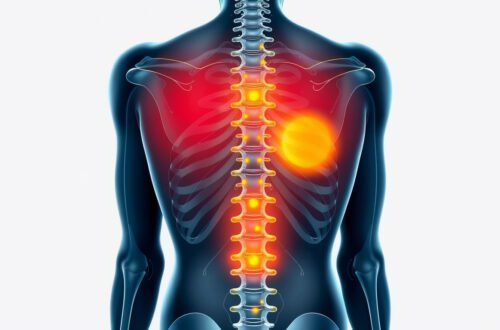Lumbar herniation is a common spinal condition that affects many individuals, leading to significant discomfort and mobility issues. When a lumbar herniation occurs, the soft inner material of a spinal disc pushes through the tough outer layer, pressing on nearby nerves and resulting in pain, numbness, or weakness in the lower back and legs. Managing lumbar herniation effectively is crucial to restoring quality of life, minimizing pain, and preventing further nerve damage. In this article, we will explore various treatment options for lumbar herniation pain management, emphasizing comprehensive and personalized approaches.
Understanding Lumbar Herniation
Before diving into treatment options, it’s essential to understand what lumbar herniation entails. The lumbar spine consists of five vertebrae in the lower back, each cushioned by intervertebral discs that act as shock absorbers. When these discs herniate, they can impinge on nerve roots, leading to symptoms such as sciatica, lower back pain, and leg weakness. Factors contributing to lumbar herniation include aging, repetitive strain, heavy lifting, and poor posture.
The severity of symptoms varies among individuals. Some may experience mild discomfort, while others suffer debilitating pain that limits daily activities. Proper diagnosis through physical examinations and imaging studies such as MRI is vital to determine the extent of herniation and craft an effective treatment plan.
Conservative Treatment Options
Many cases of lumbar herniation respond well to conservative, non-invasive treatments. These methods aim to alleviate pain, reduce inflammation, and promote natural healing.
- Physical Therapy
Physical therapy is a cornerstone of lumbar herniation management. Therapists design individualized exercise programs stretching and strengthening the muscles supporting the lumbar spine. Core stabilization exercises, gentle stretches, and posture correction can reduce nerve pressure and ease discomfort.
- Medications
- Nonsteroidal Anti-Inflammatory Drugs (NSAIDs): Medications like ibuprofen and naproxen help reduce inflammation and pain.
- Muscle Relaxants: Prescribed for muscle spasms associated with nerve impingement.
- Analgesics: Mild pain relievers for symptom relief.
- Corticosteroid Injections: Epidural steroid injections can provide targeted relief from severe pain by reducing local inflammation around affected nerves.
- Rest and Activity Modification
While complete bed rest isn’t recommended, avoiding activities that exacerbate symptoms—such as heavy lifting or prolonged sitting—can help manage pain levels.
- Heat and Cold Therapy
Applying ice packs or heat pads can reduce inflammation and muscle tension, providing temporary pain relief.

Advanced Therapies and Interventional Procedures
For cases where conservative measures fail to provide relief, more advanced interventions may be necessary.
- Minimally Invasive Procedures
- Percutaneous Discectomy: Using small incisions or needles, surgeons remove herniated disc material to decompress nerves.
- Radiofrequency Nerve Ablation: Targeted heat destroys nerve fibers transmitting pain signals.
- Surgical Treatments
When symptoms are severe, persistent, or worsening, surgical options may be recommended:
- Microdiscectomy: A minimally invasive procedure where herniated disc fragments are removed to relieve nerve pressure.
- Laminectomy: Removal of part of the vertebral bone to enlarge the spinal canal.
- Spinal Fusion: Stabilizes the spine when significant instability exists.
Choosing the Right Treatment Path
Determining the appropriate treatment for lumbar herniation involves careful evaluation by a spine specialist. Factors influencing decisions include the severity and duration of symptoms, nerve involvement, overall health, and patient preferences.
Key Considerations:
- The duration of pain and response to conservative treatments.
- The degree of nerve compression observed in imaging.
- The patient’s activity level and lifestyle.
Non-surgical options are ideally tried first, often providing sufficient relief. Surgery is considered when conservative approaches fail, or neurological deficits worsen.
Lifestyle and Preventive Measures
Post-treatment, adopting healthy habits can prevent recurrence and support spinal health:
- Maintain proper posture during work and daily activities.
- Practice regular low-impact exercise like walking or swimming.
- Use ergonomic furniture to reduce strain.
- Avoid heavy lifting with improper technique.
- Maintain a healthy weight to reduce spinal stress.
Supporting Evidence and Expert Insights
Research indicates that combining physical therapy with medication and lifestyle modifications yields the best outcomes for lumbar herniation (source). Additionally, minimally invasive surgical techniques have shown high success rates in symptom relief with shorter recovery times.
Frequently Asked Questions (FAQs)
Q1: What are the most effective lumbar herniation treatments?
A1: The most effective treatments typically involve conservative approaches such as physical therapy, medications, and activity modifications. If those do not relieve symptoms, minimally invasive procedures or surgery like microdiscectomy may be recommended.
Q2: Can lumbar herniation heal on its own?
A2: Mild herniations may improve over time with conservative care, but significant herniations often require active intervention. Consulting with a healthcare professional is crucial for personalized guidance.
Q3: How long does it take to recover from lumbar herniation surgery?
A3: Recovery varies but generally involves a few weeks of restricted activity followed by gradual return to normal activities. Full recovery can take 3-6 months, depending on individual circumstances.
Conclusion and Call to Action
Lumbar herniation pain management is a multifaceted process that benefits from a combination of conservative therapies, interventional procedures, and lifestyle modifications. Early diagnosis and tailored treatment plans are vital for optimal recovery and return to normal function. If you are experiencing symptoms of lumbar herniation, don’t delay seeking professional evaluation. Consult a spine specialist to explore the most suitable treatment options for your condition. Empower yourself with knowledge and proactive care to regain comfort and mobility—your spine will thank you!
Take the first step today—schedule an appointment with a qualified healthcare provider and start your path toward effective lumbar herniation management.






